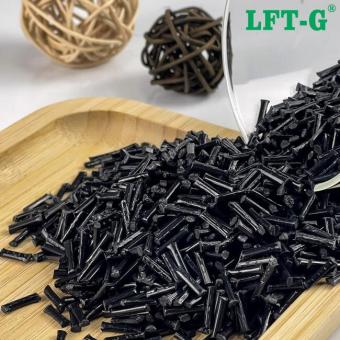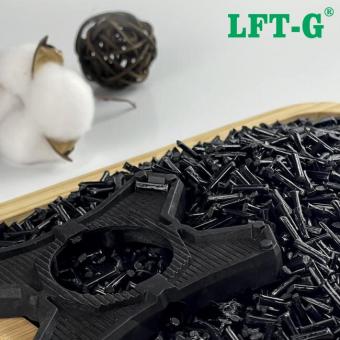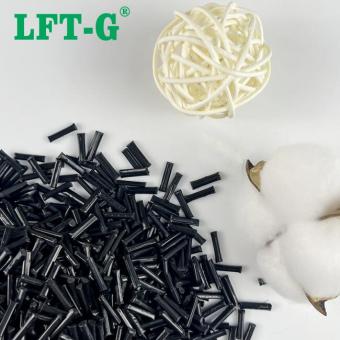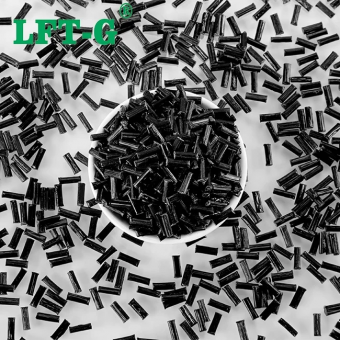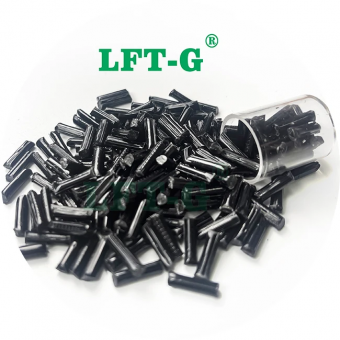Long carbon fiber is a new material with high strength and high modulus and excellent mechanical properties. It is a microcrystalline graphite material obtained by carbonization and graphitization of organic fibers. Its specific gravity is less than 1/4 of steel, and its strength is higher than that of steel. Corrosion resistant, high modulus, no melting. And a variety of resin substrates after impregnation extrusion molding into pellets, long carbon fiber polymer. Can be used for direct molding products. In recent years, it has been widely used in aerospace, mechanical and electronic chemicals.
-
LFT Material Polypropylene Resin With Filler Carbon Fiber CompoundsThrough carbon fiber reinforcement, can improve the strength of polypropylene materials.
- High tensile strength stiffness plastic
- reinforcement nylon pp cf 30 cfrp
- carbon fiber filler composites
- Engineering use polymer good price
- Low MOQ 20kg/bag TDS properties
- customized sample free factory price
Tags :
-
Xiamen LFT-G Long Carbon Fiber Reinforced PEEK Composite Injection ModingPEEK filling long carbon fiber reinforced thermoplastic for lightweight car parts.
- Carbon fiber PEEK granules aerospace automotive parts
- Carbon fiber composite peek granules
- Plastic peek carbon fiber polymers peek resin
- Black color peek carbon fiber granules
- Black color peek carbon fiber plastic
- Peek carbon fiber reinforced pellet
Tags :
-
LFT-G Polyamide 12 long carbon fiber reinforced compounds nylon for car partsLong carbon fiber Carbon fiber has many excellent properties, high axial strength and modulus, low density, high specific performance, no creep, super high temperature resistance in non-oxidizing environment, good fatigue resistance, specific heat and electrical conductivity between non-metal and metal, small coefficient of thermal expansion and anisotropy, good corrosion resistance, good X-ray transmission. Good electrical and thermal conductivity, good electromagnetic shielding, etc. Compared with traditional glass fiber, carbon fiber has more than 3 times of Young's modulus; it is about 2 times of Young's modulus compared with Kevlar fiber, which is insoluble and swollen in organic solvents, acids and alkalis, and has outstanding corrosion resistance. But is there a way to reduce the price of carbon fiber? That is to mix it with relatively cheap nylon material to form a composite material with good performance and meet the requirements. In that case, there is no doubt that carbon fiber nylon will definitely have a place in the composite material. Nylon itself is an engineering plastic with excellent performance, but moisture absorption, poor dimensional stability of products. Strength and hardness are also far from metal. In order to overcome these shortcomings, as early as before the 70s. People have used carbon fiber or other varieties of fibers for reinforcement to improve its performance. Carbon fiber reinforced nylon materials have developed rapidly in recent years, because nylon and carbon fiber are excellent performance in the field of engineering plastics materials, its compound material synthesis reflects the superiority of the two, such as strength and rigidity than unreinforced nylon is much higher, high temperature creep is small, thermal stability has improved significantly, good dimensional accuracy, wear resistance. Excellent damping, compared with glass fiber reinforced has better performance. Therefore, carbon fiber reinforced nylon (CF / PA) composites have developed rapidly in recent years. And for 3D printing using SLS technology is the most suitable technical means to achieve carbon fiber reinforced nylon. TDS for reference Application Our company Xiamen LFT composite plastic Co., Ltd is a brand-name company that focuses on LFT&LFRT. Long Glass Fiber Series (LGF) & Long Carbon Fiber Series (LCF). The company's thermoplastic LFT can be used for LFT-G injection molding and extrusion, and can also be used for LFT-D molding. It can be produced according to customer requirements: 5~25mm in length. The company's continuous infiltration reinforced thermoplastics have passed ISO9001&16949 system certification, and the products have obtained lots of national trademarks and patents.
- long fibre reinforced thermoplastics
- carbon fiber reinforced plastics granules
- long carbon fiber reinforced pa12
- long fiber composite pa6 granules
- pa6 lcf polymers carbon fiber CFRP good price polymer
Tags :
-
Xiamen LFT-G Polyphenyl sulfide fill Long Carbon Fiber Polymer PPSPolyphenylene sulfide is a new functional engineering plastic.
- Polyphenyl sulfide long carbon fibre
- PPS plastic rein forced compounds
- Composite material pps industrial use
- Filling lcf 30 pps composite plastic new materials
- High flame retardant car parts CFRP
- Factory use raw material modified plastic high performance
Tags :
-
LFT Polyamide 66 high performance long carbon fiber reinforcementPolyamide 66 roving carbon fiber Nylon black color with heat resistance
- Long carbon fiber enhance pellets
- Roving carbon fiber PA66 instead metal and steel
- Nylon66 composite granules for injection
- High quality PA66 long fiber composite、
- Polyamide long fiber composite
- Virgin plastic PA6 LCF40 for car parts
Tags :
-
LFT Industrial Grade Polypropylene Long Carbon Fiber Reinforcement 20%-60%LFT Plastics are frequently used to replace metal for applications in which light weighting, improved impact strength, elastic modulus, and material strength are required.
- PP LCF CF compounds pellets granules
- Modified thermoplastic resin polymers
- easy to produce for car parts home appliance
- whole sell factory price 25kg/bag
- Low density and weight instead metal and steel
- can be customized plastic 10-12 mm length
Tags :
-
LFT Polyamide 6 Nylon Manufacturer Carbon Fiber filled Compounds engineeing use
- PA6 thermoplastic resinforced material
- fiber filling polymer instead of metal steel
- Sample free natural plastic new CFRP
- engineering plastic structural parts
- modified resin good price low MOQ
- Car parts application bearings
Tags :
-
LFT Polyphenylene Sulfide Manufacturer Carbon Fiber filled Compounds green materialsPPS plastic (polyphenylene sulfide), is a thermoplastic special engineering plastic with excellent comprehensive properties.view more
-
LFT Polyamide 6.6 Manufacturer Carbon Fiber filled Compounds green materialsPolyamide, which is also known by the trade name, Nylon, has excellent heat resistant properties, especially when combined with additives and filler materials.view more
-
LFT Homopolymer Polypropylene Manufacturer Carbon Fiber filled Compounds green materialsPolypropylene, also known as PP or polypropene, is a polyolefin or saturated polymer.view more

 e-mail
e-mail English
English français
français Deutsch
Deutsch русский
русский italiano
italiano español
español português
português العربية
العربية 日本語
日本語 한국의
한국의 中文
中文













